An all-inclusive experience, redefined…At Bawah Reserve in Indonesia’s pristine Anambas...
Begin your day at Bawah Reserve with your choice from our Juice Butler service: fresh...
If you’ve noticed the beautifully patterned fabrics in your villa, you’ve already...
Ready to make a splash?For guests who are both swimming-fit and up for a challenge,...
Welcome to the thermal contrast therapy facility at Aura Sanctuary at Bawah Reserve,...
Planning your dream private island holiday in Indonesia? Here at Bawah Reserve, we...
3 ways to repost or use our Instagram Reels
We love that you want to share a little...
2024 wellness trends were exciting for sure, but it keeps getting better! The top...
A new subtle yet powerful trend - that of being “demure” and “mindful” - has been...
When we think of bees, honeybees often come to mind. However, at Bawah Reserve, a...
In the heart of Southeast Asia lies a hidden gem that promises a retreat into nature,...
It’s safe to say that if you ask someone to name a tropical island destination, they will...
As we step into 2024, the world of well-being is teeming with transformative trends that...
2 years ago for Earth Day 2022, we created 10 sincere pledges for investing in the planet...
Starting to plan your dream wedding? Some couples have a clear idea of their perfect...
We are often asked about the best time of year to schedule a trip to Bawah Reserve.Which...
Our faraway paradise is well worth the journey and there are many ways to get to Bawah,...
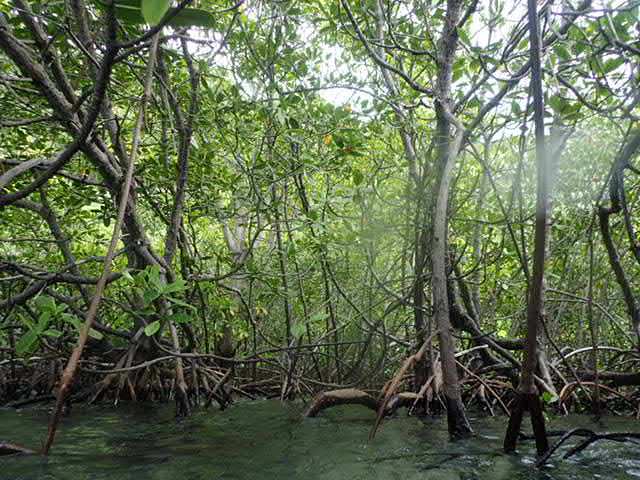
Bawah’s location is remote – there are no other islands closer than around 20 nautical miles. This means that Bawah has an independent ecosystem.
Bawah’s ecosystem includes rare and endangered species of flora and fauna, coral reefs that support a wide variety of marine life, and mangroves between the terrestrial and marine environments.
Although there are no mammals (apart from humans) on the island, there are many types of lizards, mangrove snakes, pythons, and a great variety of birds.
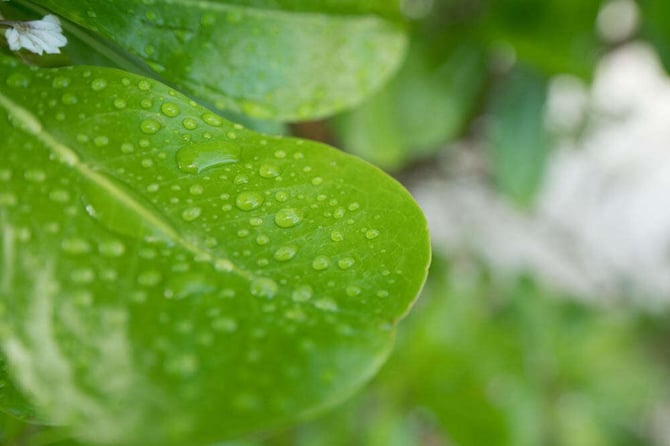
Initial research by arboriculturalists has identified the presence of some trees that are at least 2000 years old, underlining the vital importance of protection and conservation of the islands.
The forest on Bawah comprises a total of 576 individual trees with a trunk diameter greater than 30
cm. Canopy trees with the highest density include the Keruing (Dipterocarpus grandifloras) (104
individual trees), Sindora coriacea (37 individual trees) and Canarium hirsutum (30 individual trees).
Other flora includes: Sea Hibiscus (Hibiscus tiliaceus) and Benth (Serianthes grandiflora).
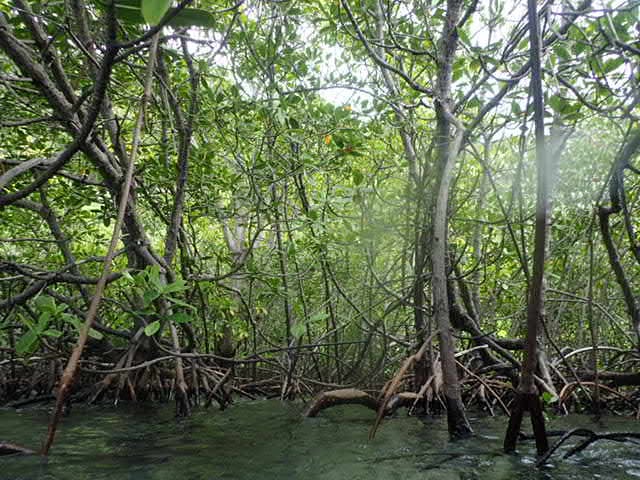
The mangroves dotted around the islands are also extremely important in sustaining marine life
(acting as a nursery to protect juvenile fish), and supporting the growth of other types of vegetation.
Species of mangrove recorded on Bawah include Aegiceras corniculata, Bruguiera gymnoriza,
Rhizophora stylosa, Pempis accidula, Xylocarpus granatum and Heritiera littoralis.
The diversity of species of marine life around Bawah is extensive. We have conducted two Reef
Health Monitoring surveys in collaboration with National University of Singapore and a team of
Indonesian Marine Biologists. To date 240 species of reef fish have been recorded from Bawah’s
south eastern reefs, including the Foxface (Siganus vulpinus), Humphead Bannerfish (Heniochus
Varius), Indian Parrotfish (Chlorurus capistratoides), Humphead Parrotfish (Bolbometopon
muricatum), and a variety of Butterflyfish (of the family Chaetodontidae). Other marine life
frequenting the waters around Bawah include: Blue-spotted Ribbontail Ray (Taeniura lymma),
Blacktip Reef Shark (Carcharhinus melanopterus).
Read more about marine life at Bawah Reserve here.
We employ two on-site marine biologists who have so far built 10 coral tree nursery areas, growing staghorn coral fragments for transplanting onto artificial reefs (hexadomes).
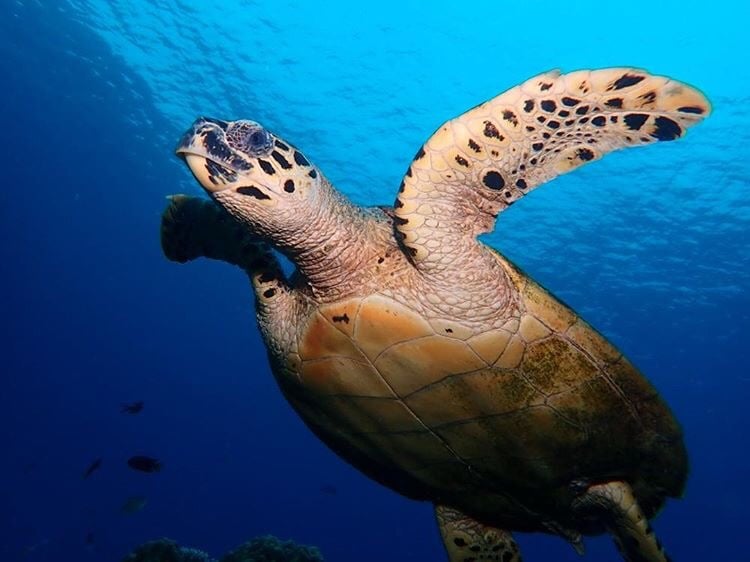
Around Bawah, there are Green Sea Turtles (Chelonia mydas) and Hawksbill turtles (Eretmochelys
imbricate), and to protect these endangered creatures, the Bawah Anambas Foundation is building a
turtle semi-natural nest and hatchery. The goal is to protect the turtles from natural predators such
as monitor lizards. and consequently, increase the population of turtles here in the region.
Read more about Turtles at Bawah here.
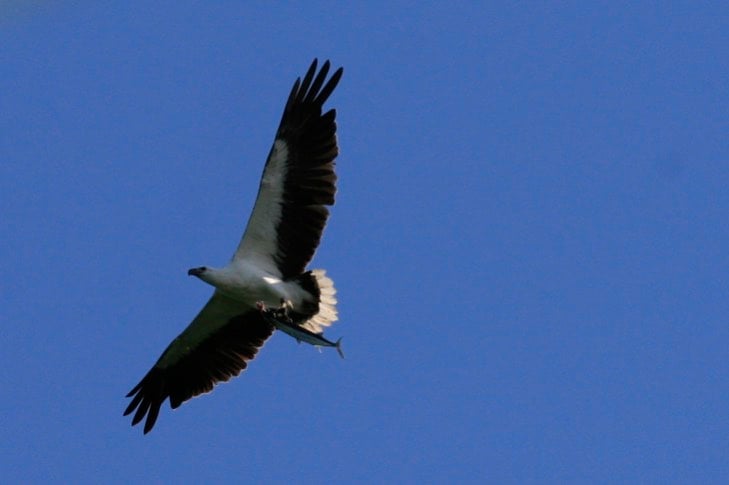
Flying fox bats (Pteropus hypomelanus) are also a common sight around Bawah, as are Asian water
monitor lizards (Varanus salvator), Great Eggfly Butterfly (Hypolimnas Bolina), White-bellied Sea
Eagles (Haliaeetus leucogaster) and Collared Kingfishers (Todiramphus chloris).
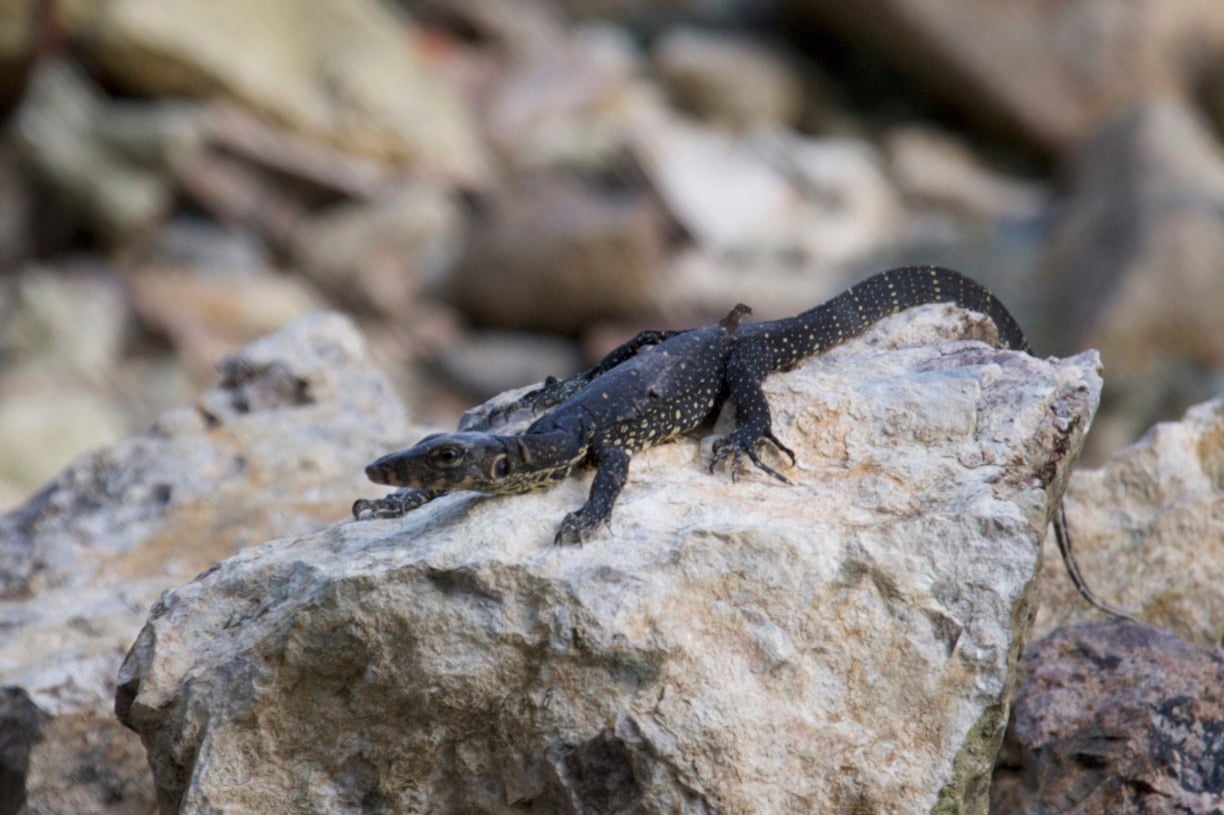
According to the World Resources Institute, scientists have a better understanding of how many
stars there are in the galaxy than how many species there are on Earth. What we do know is that
the speed of loss of species is estimated by experts to be between 1,000 and 10,000 times higher
than the background (natural) extinction rate. With this knowledge comes the responsibility to
protect and conserve the full range of species, particularly in places where this diversity is at its
greatest, such as Bawah and the wider Anambas region.
Visiting Bawah and our beautiful ecosystem couldn't be easier
Jon Woodhead is Director of Challenge Sustainability, an international sustainability advisory firm
working to develop the sustainability programme for Bawah Reserve.
www.challengesustainability.com
An all-inclusive experience, redefined…At Bawah Reserve in Indonesia’s pristine Anambas...
Begin your day at Bawah Reserve with your choice from our Juice Butler service: fresh...
If you’ve noticed the beautifully patterned fabrics in your villa, you’ve already...
Ready to make a splash?For guests who are both swimming-fit and up for a challenge,...
Welcome to the thermal contrast therapy facility at Aura Sanctuary at Bawah Reserve,...
Planning your dream private island holiday in Indonesia? Here at Bawah Reserve, we...
3 ways to repost or use our Instagram Reels
We love that you want to share a little...
2024 wellness trends were exciting for sure, but it keeps getting better! The top...
A new subtle yet powerful trend - that of being “demure” and “mindful” - has been...
When we think of bees, honeybees often come to mind. However, at Bawah Reserve, a...
In the heart of Southeast Asia lies a hidden gem that promises a retreat into nature,...
It’s safe to say that if you ask someone to name a tropical island destination, they will...
As we step into 2024, the world of well-being is teeming with transformative trends that...
2 years ago for Earth Day 2022, we created 10 sincere pledges for investing in the planet...
Starting to plan your dream wedding? Some couples have a clear idea of their perfect...
We are often asked about the best time of year to schedule a trip to Bawah Reserve.Which...
Our faraway paradise is well worth the journey and there are many ways to get to Bawah,...
© Bawah Reserve 2024. Anambas. Riau Islands. Indonesia
leave a comment